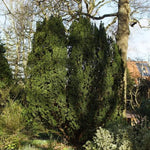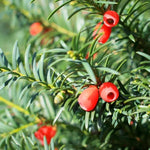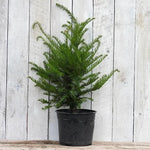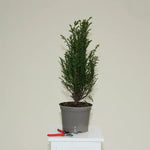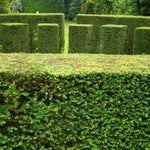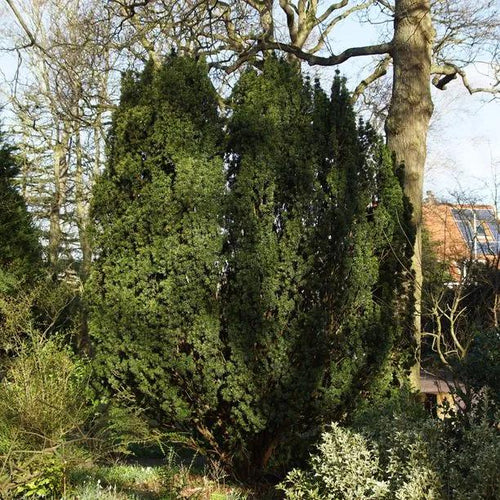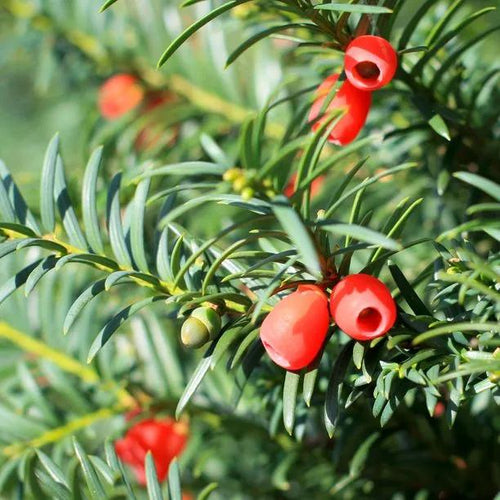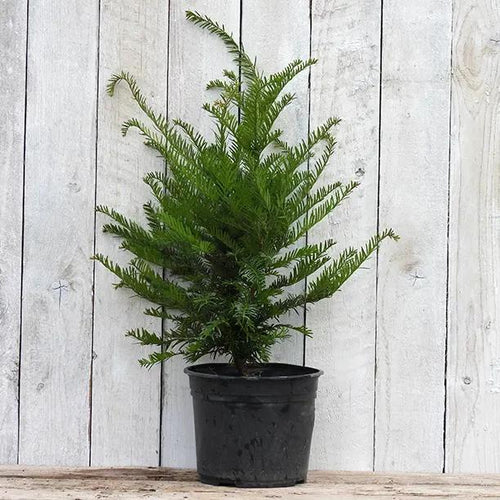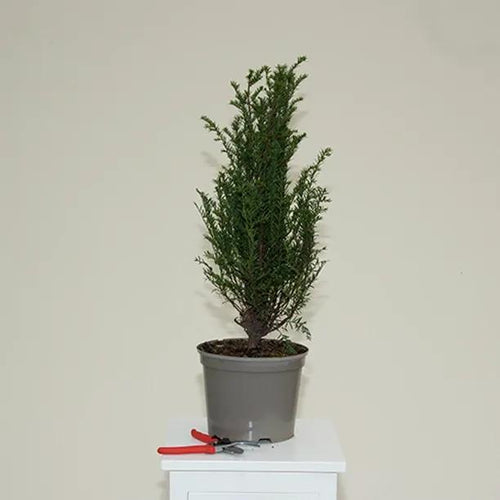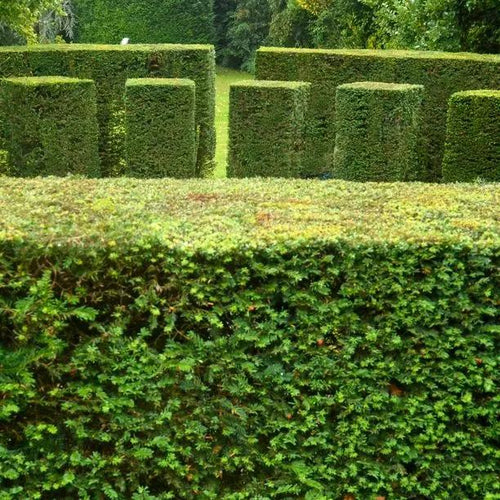 Delivered across the UK
Delivered across the UK Which Best Plant Supplier 2025
Which Best Plant Supplier 2025 1 Year Bareroot Plant Guarantee
1 Year Bareroot Plant Guarantee
About This Product
English Yew Hedging Plants
Common Yew, Taxus baccata, is a native conifer that makes a classic evergreen hedge with a rich, deep green colour that clips beautifully into formal lines, billowing curves and sturdy topiary. Yew is an ideal backdrop to any flower border and it's tough enough to be a roadside hedge. Unlike most other conifers, it'll regrow from old wood so it can be hard pruned. It forgives mistakes when clipping, and old, neglected yew hedges can easily be renovated. It's extremely hardy, shade-tolerant and will grow anywhere with decent drainage, reaching about 20 metres if grown as a tree.
Features
- The plants on this page are young saplings, ideal for planting as hedging or in woodland projects.
- You can also buy big rootballed Yew plants for instant privacy.
Browse our other evergreen hedging, or our full range of hedging.
Yew hedge plants are delivered bareroot during autumn and winter.
Spacing a Yew hedge:
Plant bareroot Yew hedging at 3 plants per metre, 33cm apart. Larger plants can be spaced at 50cm intervals
General description of Yew plants:
Yew has a reputation for being slow growing and this true of mature hedges, which only need clipping once a year. Young Taxus baccata plants are quite vigorous, however. They can easily grow by a metre in under 3 years.
Yew casts dense shade and effectively prevents the growth of other plants underneath it. It's an extremely tough tree; the only thing it won't tolerate is constantly wet soil.
Yew is an unusual conifer because it produces a fruit with a red, berry-like coating around each single seed, instead of a pine-cone that carries a large number of seeds. The red, juicy part of the fruit's called the aril: it's a uniquely adapted reproductive part of a pine cone found in all other conifers, called an ovuliferous scale. The seeds are eaten and dispersed by birds. It's special in another way too: yew trees begin life as males or females, but old trees will produce the occasional stem of the opposite sex. This allows isolated trees to continue making fertile seeds. All parts of the Yew tree are poisonous to humans and almost all animals apart from the red coating of the seeds, but even these shouldn't be eaten: if the seed itself is chewed, it releases paralysing, potentially lethal chemicals.
History & Trivia
Yew is probably the only truly native British tree: no other tree is sure to have been growing here through the last Ice Age. Yew trees live for ages; there are several in Britain that are older than 2000 years, which means that they were centuries old when the Romans invaded in the year 43. The yew trees commonly found in churchyards are often much older than the church itself. Yew's long life is partly due to the strength of the wood and the high toxicity of its living tissues, which seem to be almost immune to disease. One of the noxious poisons derived from the green parts of Yew trees, Taxol, is used in modern medicine to kill cancer cells. Yew's ability to regrow from old wood and its shade-tolerant leaves mean that old trees can regenerate if they're damaged by storms or harvested for wood, even if they're overshadowed by faster growing broadleaf trees.
Yew has been an extremely important resource to humans since before modern Homo sapiens emerged on the scene about 200,000 years ago. The oldest surviving wooden relic from our proto-human ancestors is over 400,000 years old: a spearhead made of Yew. The Yew Longbow was the cornerstone of the medieval English army. Boys, often Welsh conscripts, would be trained from a young age to use the heavy bow, permanently warping the shape of their bodies in the process.
In the age of our animist ancestors, the Yew tree was a god of death and rebirth. It lives for thousands of years, growing in the darkest heart of the forest and on freezing mountain slopes. Old yew trees tend to spread outwards and slump a bit as their heavy branches pull open their centre, often creating a thick, wide evergreen canopy quite close to the ground. As the original, main trunk gradually splits apart and rots away, these low branches can root where they rest on the soil, thus resurrecting. It's easy to imagine clans of Stone Age humans constructing homes under them, perhaps using the long, low, rigid branches as ceiling beams, sheltering from the late Autumn winds and fending off famished bears. The sacred quiet beneath the oldest Yews was a place of reverence. It housed the wizened, gnarled face of the god itself: a massive, brooding creature that didn't suffer cold or time. The red flesh of Yew's fruit was a nourishing treasure to our ancestors in winter, but anyone who bit down on the seed inside could have been paralysed and possibly killed, which surely added to the awe that this unique tree inspired.
These "berries" have an interesting flavour and an unfortunately slimy texture, however, it's essential that you spit the seed out without chewing it. If you swallow one by accident, it won't be a problem as long as you didn't bite into it.
Taxus is Latin for Yew, and baccata means to have berries, bacca.
Yew is superb firewood, but it needs to be split and then seasoned for several years before it'll burn beautifully.
"He that in winter should behold some of our highest Hills in Surrey, clad with whole woods of these two last sort of trees, yew and box, might without the least violence to his imagination, easily phansie himself transported into some new, or enchanted Country."
John Evelyn, 1662










 Secure, One-Tap Checkout
Secure, One-Tap Checkout
 Hand Picked, Delivered to Your Door!
Hand Picked, Delivered to Your Door! 1 Year Bareroot Guarantee
1 Year Bareroot Guarantee